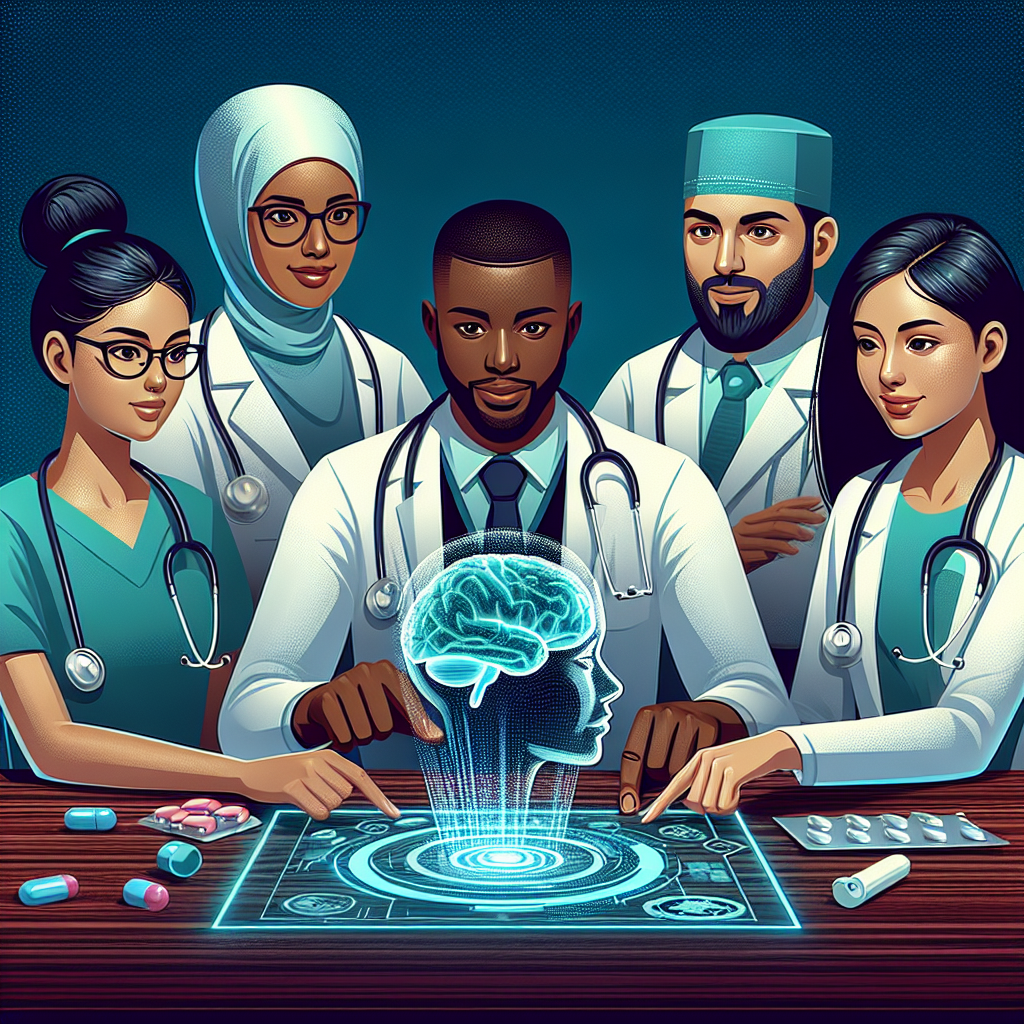The Benefits of AI Integration for Healthcare Provider Collaboration
In recent years, artificial intelligence (AI) has become increasingly prominent in the healthcare industry. From improving patient outcomes to streamlining administrative tasks, AI has the potential to revolutionize the way healthcare providers collaborate and deliver care. This article will explore the benefits of AI integration for healthcare provider collaboration and highlight some of the key ways in which AI can enhance the delivery of healthcare services.
1. Improved Diagnosis and Treatment
One of the most significant benefits of AI integration for healthcare provider collaboration is its ability to improve the accuracy and efficiency of diagnosis and treatment. AI-powered diagnostic tools can analyze large amounts of patient data, including medical records, lab results, and imaging scans, to help healthcare providers make more informed decisions about a patient’s condition.
For example, AI algorithms can help radiologists identify abnormalities in medical images more quickly and accurately than traditional methods. This can lead to earlier detection of diseases such as cancer and improved outcomes for patients. Additionally, AI can help healthcare providers develop personalized treatment plans based on a patient’s unique genetic makeup and medical history.
2. Streamlined Administrative Tasks
Another key benefit of AI integration for healthcare provider collaboration is the automation of administrative tasks. By using AI-powered tools to handle tasks such as patient scheduling, billing, and insurance claims processing, healthcare providers can free up time to focus on delivering high-quality care to patients.
AI can also help healthcare providers streamline communication and collaboration with other members of the care team, such as nurses, pharmacists, and specialists. By automating tasks such as sending reminders to patients or coordinating appointments, AI can improve efficiency and reduce the risk of errors in care delivery.
3. Enhanced Patient Engagement
AI integration can also enhance patient engagement and communication, which is essential for delivering high-quality healthcare services. AI-powered chatbots can provide patients with instant access to information about their health conditions, treatment options, and appointment schedules, helping to improve patient satisfaction and adherence to treatment plans.
Additionally, AI can help healthcare providers collect and analyze patient feedback to identify areas for improvement in care delivery. By using AI-powered tools to monitor patient satisfaction and outcomes, healthcare providers can make data-driven decisions to enhance the quality of care and improve patient outcomes.
4. Real-Time Data Analysis
AI integration for healthcare provider collaboration enables real-time data analysis, which can help healthcare providers make more informed decisions about patient care. By analyzing large amounts of patient data in real-time, AI algorithms can identify trends and patterns that may not be apparent to human healthcare providers.
For example, AI can help healthcare providers track the spread of infectious diseases, monitor the effectiveness of treatment protocols, and predict patient outcomes based on historical data. By providing healthcare providers with timely and accurate information, AI integration can help improve patient outcomes and reduce the risk of medical errors.
5. Cost Savings
Finally, AI integration for healthcare provider collaboration can help reduce costs and increase efficiency in the delivery of healthcare services. By automating repetitive tasks, such as data entry and administrative paperwork, AI can help healthcare providers save time and resources.
Additionally, AI-powered tools can help healthcare providers identify opportunities for cost savings and efficiency improvements in areas such as inventory management, resource allocation, and patient flow. By optimizing workflows and reducing waste, AI integration can help healthcare providers deliver high-quality care at a lower cost.
FAQs
Q: How can AI improve patient outcomes in healthcare provider collaboration?
A: AI can improve patient outcomes by helping healthcare providers make more accurate diagnoses, develop personalized treatment plans, and monitor patient progress in real-time. By analyzing large amounts of patient data, AI algorithms can identify trends and patterns that may not be apparent to human healthcare providers, leading to better outcomes for patients.
Q: What are some examples of AI-powered tools that can enhance healthcare provider collaboration?
A: Some examples of AI-powered tools that can enhance healthcare provider collaboration include diagnostic algorithms, predictive analytics software, chatbots for patient communication, and robotic process automation for administrative tasks. These tools can help healthcare providers streamline workflows, improve communication, and deliver high-quality care to patients.
Q: How can healthcare providers ensure the security and privacy of patient data when integrating AI into their practice?
A: Healthcare providers can ensure the security and privacy of patient data when integrating AI by implementing robust data encryption and access controls, conducting regular security audits and risk assessments, and complying with regulations such as the Health Insurance Portability and Accountability Act (HIPAA). By prioritizing data security and privacy, healthcare providers can protect patient information while harnessing the power of AI to improve care delivery.
In conclusion, AI integration for healthcare provider collaboration offers a wide range of benefits, from improved diagnosis and treatment to streamlined administrative tasks and enhanced patient engagement. By leveraging AI-powered tools and algorithms, healthcare providers can deliver high-quality care to patients more efficiently and effectively. As AI continues to evolve and expand in the healthcare industry, healthcare providers must embrace this technology to stay competitive and deliver the best possible care to their patients.

